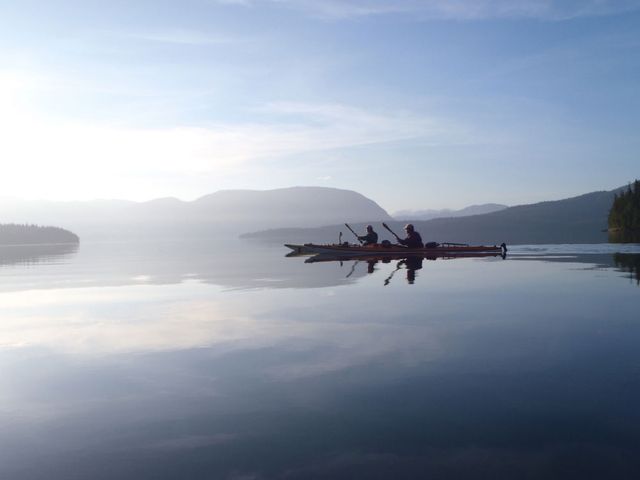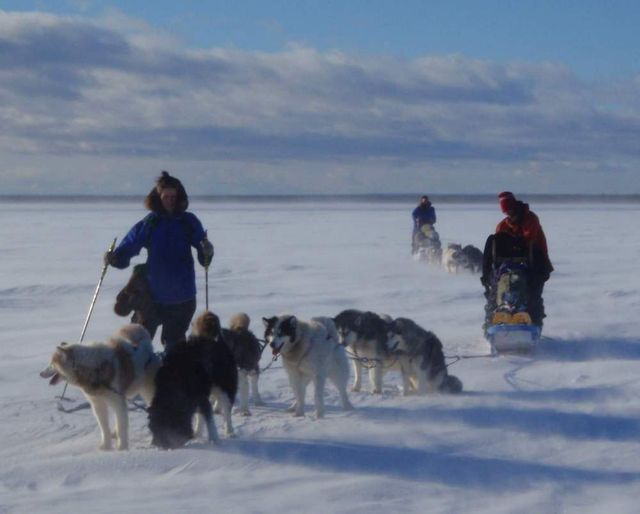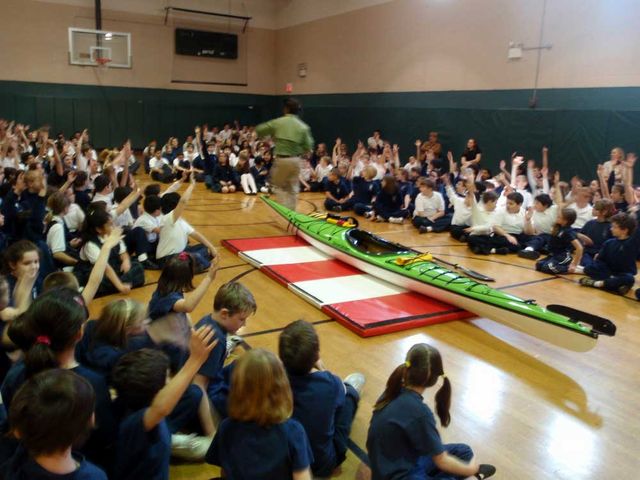
On March 21, 2010, 35-year-old Dave Freeman and 30-year-old Amy Freeman, veteran guides for , welcomed 100 people on skis, dogsleds and ice skates just outside of Ely, Minnesota. Less than a month later, the couple took off on a three-year by canoe, dogsled and foot. We called the couple halfway through their 11,700-mile quest to see how things are going.
Origins: Dave: In 2007 and 2008 we crossed South America by bicycle and canoe with a six-person international team. During that journey we decided that we wanted to cross North America under our own power. I love looking at maps to dream up ways to link different waterways together.
Where Are They Now: Dave: We have approximately 5,000 miles left in your journey and the final leg will begin on May 9. We will paddle from Grand Portage, Minnesota, along the north shore of Lake Superior and Lake Huron, and then follow a historic fur trade route to Montreal and the Saint Lawrence Seaway. Then we will cut across Northern Maine to the Atlantic Ocean and paddle down the East Coast to the Florida Keys. We will be stopping in lots of cities, large and small, along our route to conduct school assemblies and presentations at outdoor stores and other businesses along the way, but the final leg will basically be one continuous journey. We expect to reach our final destination, Key West, Florida, on April 22, 2013.

The Toughest Section: Dave: I think the three-month, 900-mile dogsled leg across the Northwest Territories was the toughest part of the trip so far. Logistically, it was expensive and challenging to move the 5,500 pounds of food that we needed for four team members and 12 sled dogs. Plus, the extreme cold caused us to burn 5,500 calories a day, and made even basic tasks like putting on our boots or feeding the dogs much more difficult.
The Best Section: Amy: We were a couple of days south of Juneau, Alaska, and could see humpback whales feeding in the distance. We were just floating for a while, getting ready to take a few photos. Then these two whales swam right toward us. For a second, I was afraid, thinking they might not see us and just plow into us. That wasn't the case at all. They swam over to check us out. Once they were within 15 feet of us, they just stopped and then spent a few minutes floating right at the surface, breathing, looking at us. This was the most powerful animal encounter I have ever experienced.
Dave: I will always remember giving kids dogsled rides in remote communities in the Northwest Territories, being approached by humpback whales in Alaska, and running rapids on the Peel River in the Yukon. However, the most enjoyable part of the trip has been learning how to live simply and spending a lot of quality time with Amy. After spending the majority of the last two years living in a tent, cooking over a fire, and traveling by canoe, kayak and dogsled, I have come to realize that, for me, collecting experiences is far more rewarding than collecting possessions. Experiencing wild places, being challenged both physically and mentally on a daily basis, and leading a simple life with the woman I love, what could be more enjoyable than that? Even at minus 40 degrees.
Why: Dave: A few years ago, I met a Cree elder in Northern Manitoba during a two-month dogsled expedition. He explained that he was sad because his people had traded their dogsleds for snowmobiles and their canoes for motorboats. “When you travel by dogsled you take in everything around you and the land talks to you,” he said. “But now everyone is in a rush and goes fast on their snowmobile. They can't hear the land anymore, they have lost touch with the land.” I realized that the same thing has happened all across America and kids aren't getting outside and exploring nature.
We need future generations of paddlers, hikers, bikers and climbers who will lead healthy, active lives, and appreciate and protect our lakes, rivers, oceans and the wild places they connect. According to the Outdoor Foundation’s 2011 Outdoor Recreation Participation Report, participation rates for kids ages six to 17 have steadily declined since 2006. In some age brackets, participation rates have dropped by as much as 16 percent. The report also reveals that 37 percent of kids who consider themselves outdoor participants get outside less than twice a month.

Follow Them: Dave: Sharing expeditions with students has been an important part of my life for a while now. Kids have participated in over a dozen of our adventures through over the last 10 years. In 2001, I took a hand-held satellite phone and an old laptop computer on a six-week winter trek across the Boundary Waters Canoe Area Wilderness and convinced five classrooms to follow my journey. Afterwards I visited all five classrooms. When I saw how much the students learned, I knew I had stumbled across a great way to improve academic skills like reading, math and critical thinking while introducing students to wilderness and human-powered travel.
We are using the North American Odyssey as a platform to actively engage over 70,000 elementary and middle school students in our journey through free, interactive educational tools on and live school assemblies. There is also a site geared toward adults at .
H/T:
–Joe Spring